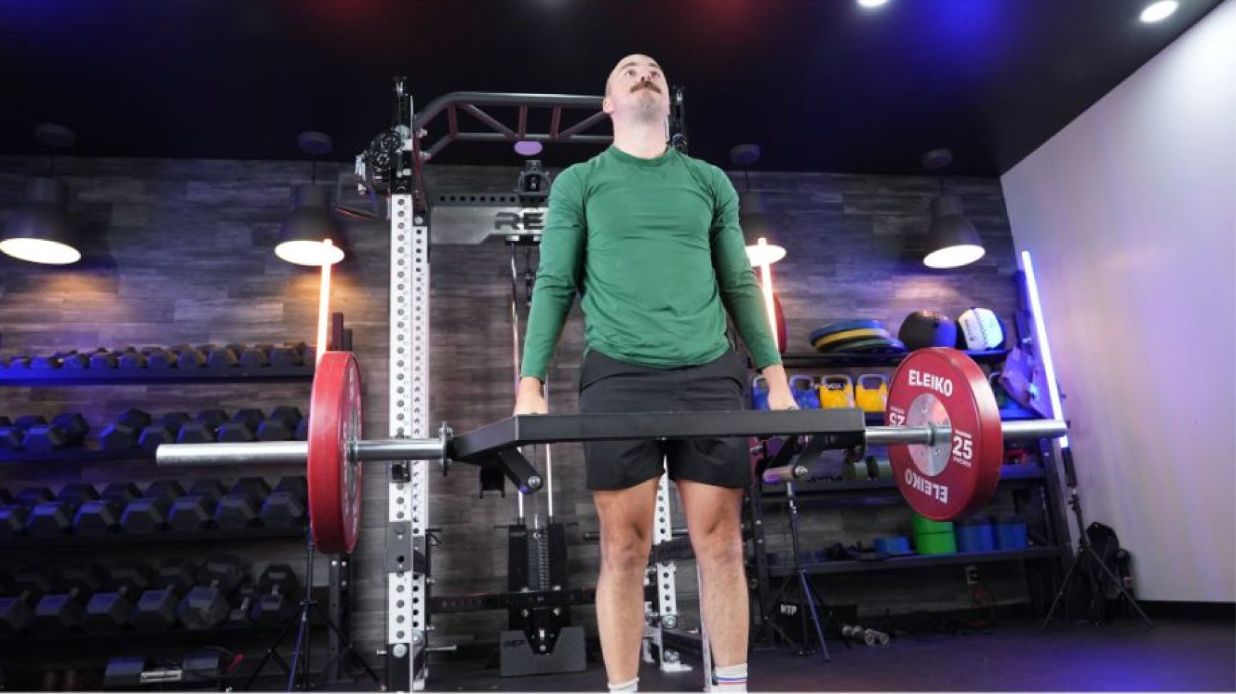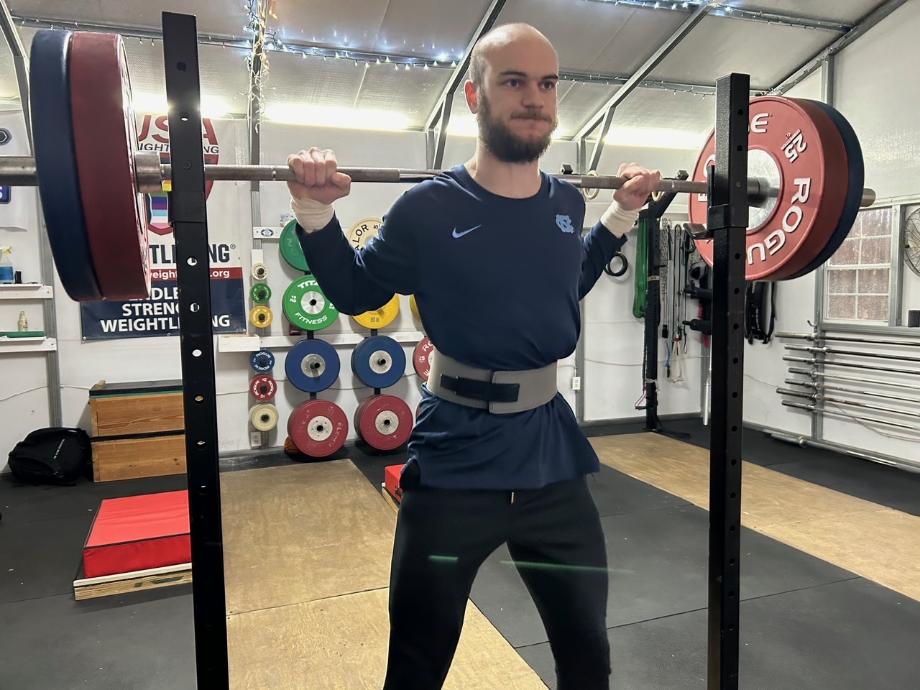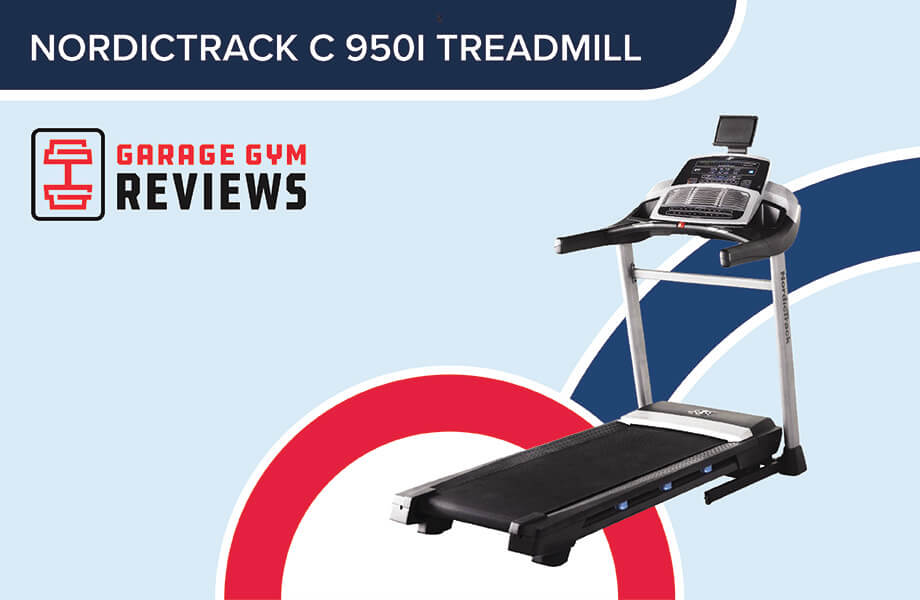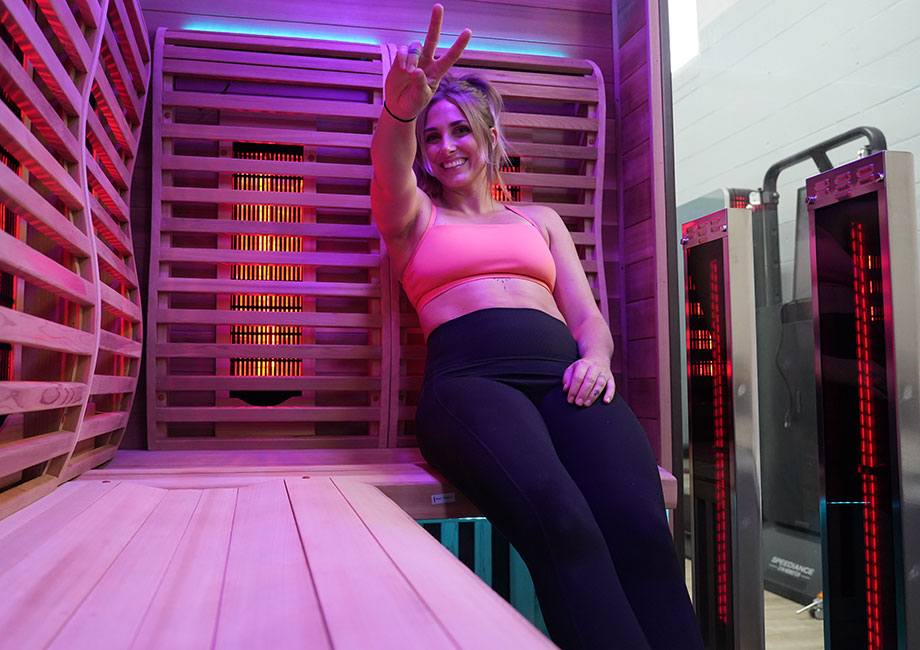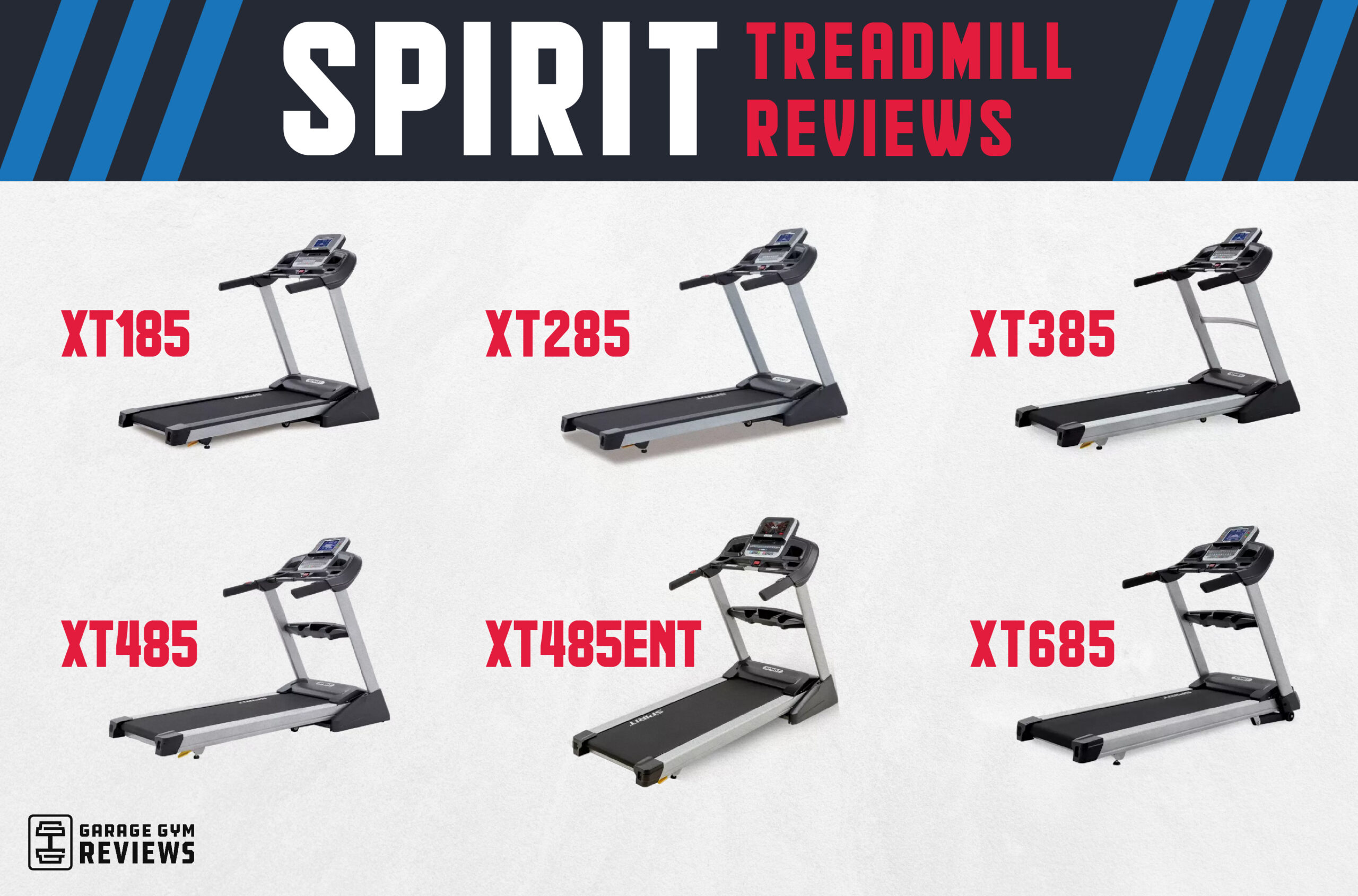There are several deadlift variations in the weightlifting world for building strength and muscle in the lower body. These include the traditional deadlift, Romanian deadlift, dumbbell deadlift, sumo deadlift, and the trap-bar deadlift. Today, we’ll hone in on the latter of these—the trap-bar deadlift (also known as the hex-bar deadlift).
I’ll give my top certified personal trainer (CPT) tips on how to do the exercise with proper form to help you avoid injuries or back pain. Afterward, I’ll go through the benefits of doing the trap-bar deadlift, as well as common mistakes to avoid. To finish, I’ll explain five variations. Soon enough, you’ll be doing this bodybuilding workout without any concerns or questions about your form, trust me.
How to Do The Trap-Bar Deadlift Exercise
- Load the trap bar with your preferred weight, then stand tall inside it.
- Hinge at your hips to grab the handles with a neutral grip. You’ll want to keep your chest up, core braced, and knees slightly bent in this starting position.
- Push through your heels to stand upright, squeezing your glutes at the top as you do so.
- Pause, then slowly lower the trap bar to its original position.
- Continue for the desired number of repetitions.
Muscles worked: Hamstrings, glutes, lower back, quads, core, traps, upper back, lats, forearms
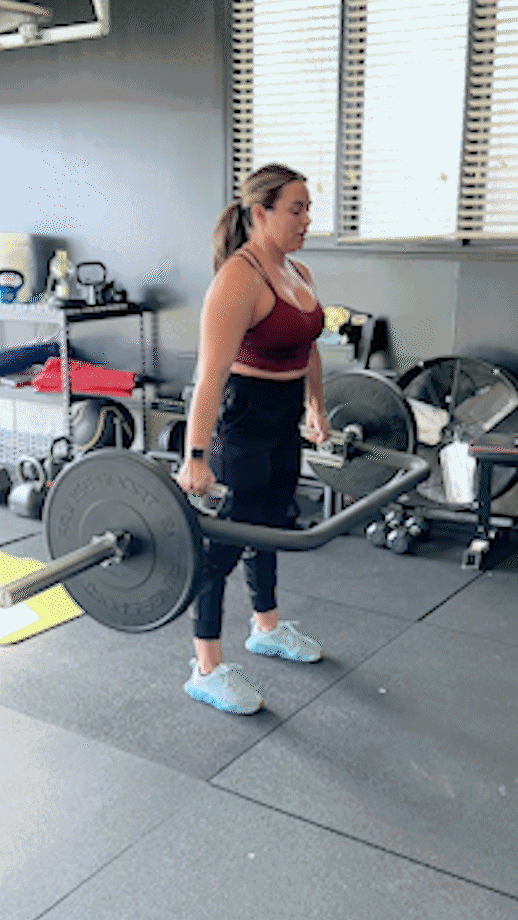
Trainer Tips for Form
There are multiple factors to consider when it comes to the correct form of the trap-bar deadlift. Here are a few form tips I share with clients when demonstrating this movement.
Stand In the Center of the Trap Bar
When you step inside the hex bar, make sure you’re in the correct position (right in the center). Your shins should be next to the handles. This will mean that the bar moves up in a straight line when you stand. The last thing you want is to be too far forward or backward, making the lift more difficult than it should be.
Squeeze Your Glutes
As you stand, squeeze your glutes. It’s easy to forget this step, but including it helps you to lock out your knees and hips and signals the end of the movement. If you don’t, you might not be getting the full range of motion for this strength training exercise and, as a result, lose out on potential gains.
Lower the Bar Slowly
For muscular hypertrophy, lowering the bar (eccentric phase) is as important as lifting the bar (concentric phase). Don’t be one of those lifters who slams it onto the ground with little concern for themselves or anyone around them. You’re also more likely to be in the correct position for the next rep without the need to readjust.
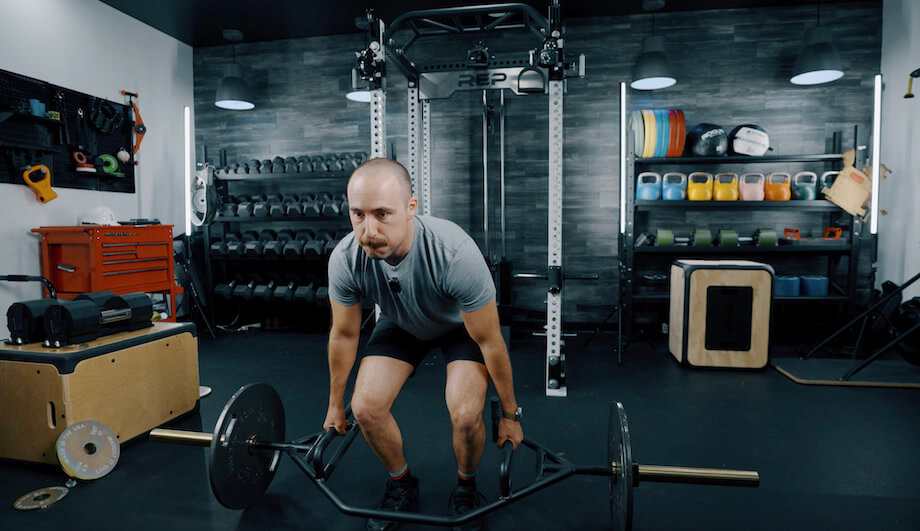
RELATED: Hypertrophy Workout
Benefits of the Trap-Bar Deadlift
Why should you do the trap-bar deadlift in the first place? Below are three reasons:
More Love for Your Quadriceps
When comparing trap-bar deadlifts to straight-bar deadlifts, a study by the Journal of Strength and Conditioning Research1 found that while the erector spinae muscles are activated more with the straight bar, the hex bar activates the quads. If you’re looking for a good quad exercise to add to your workout, the trap-bar deadlift might be the way forward.
Easier to Lock In Form
Although I do like the standard deadlift, I’ve always found it slightly uncomfortable. When I tried variations such as the trap-bar deadlift and sumo deadlift (more on this below), I felt more at home. The trap-bar deadlift has a neutral grip, and you’re in line with the bar, making it easier to get the correct form. It’s a great option for beginners.
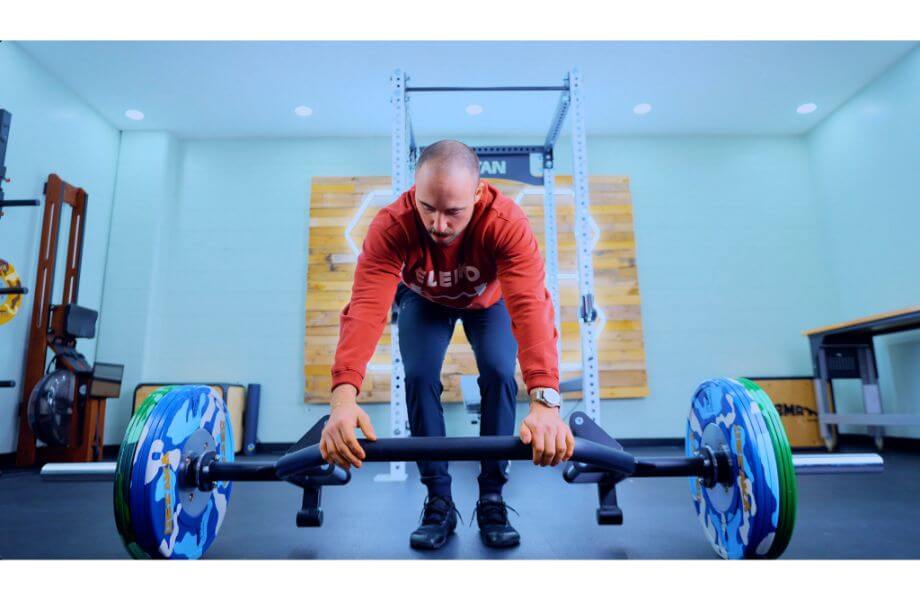
Lower Risk of Injury
Because the form is easier to maintain, the risk of injury is lower than a standard deadlift. Not only this, but when you reach the top of the movement, you can’t hyperextend as much with the hex bar, further helping prevent injury. The neutral grip also puts less strain on the wrists, and you’re less likely to suffer from lower back pain because of the position you start in.
RELATED: Wrist Mobility Exercises
Common Trap-Bar Deadlift Mistakes
Here are two common trap-bar deadlift mistakes you’ll want to avoid making:
Knees Caving In
It’s important to drive your knees out and in line with your toes to stop them from caving in toward each other during the trap-bar deadlift. If you’re used to squatting or doing traditional deadlifts, you’ll likely be in the habit of doing this already. Not only does this help to prevent injuries, but it could also mean lifting heavier loads.
Rounding Your Back
Similar to straight bar deadlifts, time and time again, I see people with rounded backs during the trap-bar deadlift. This is especially likely to happen when the weight gets heavy, leading to possible injury. To counteract this, keep an upright torso by lifting the chest up and engaging the core. Your head position is important here, too—I’d suggest looking straight ahead rather than down at the ground.
Trap-Bar Deadlift Variations and Alternatives
What if you don’t have access to a trap bar but still want to work the same muscle groups? Or alternatively, what if you want to make the exercise more challenging? Don’t worry; I’m here to help!
Below are five trap-bar deadlift variations and alternatives for you to try:
Deficit Trap-Bar Deadlift
Why do it: Starting from a deficit increases the range of motion, making the trap-bar deadlift exercise more challenging. As a result, the time under tension is increased, which can mean more activation of the muscle groups worked by the exercise.
How to do it:
- Place a weight plate or low platform on the floor inside the trap bar where you’ll be standing.
- Stand on the plate, with your feet hip-width apart. With a raised chest and neutral head position, bend over to take hold of the handles.
- Drive through your feet to stand up, ensuring your hips and shoulders rise at the same time.
- Return the trap bar to the floor in a controlled manner.
- Repeat for reps.
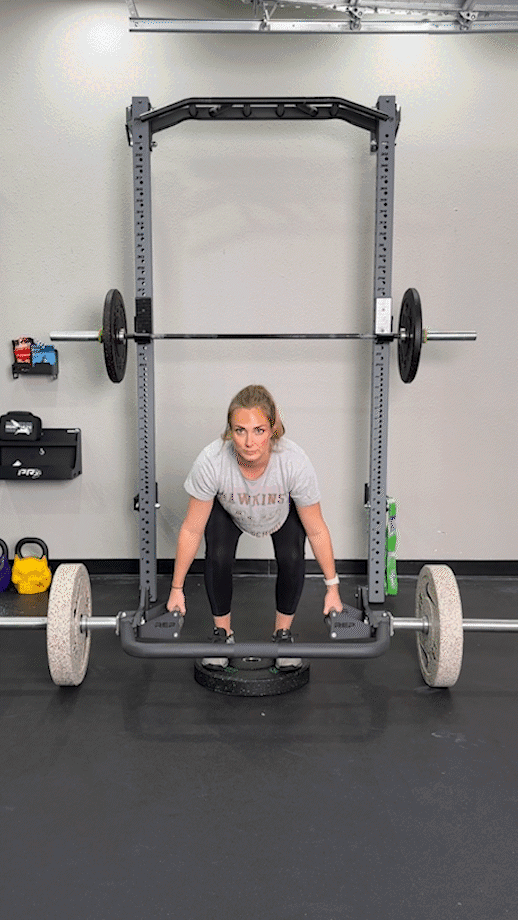
Heels-Elevated Dumbbell Deadlift
Why do it: If you don’t have access to a trap bar, don’t worry. You can replicate the movement using a pair of the best dumbbells instead. This is an ideal exercise for beginners to learn how to do deadlift work without using a bar or weight plates. You also get an increased range of motion.
How to do it:
- Take hold of a pair of dumbbells, with your arms down by your sides.
- Stand on a weight plate or slant board with your feet hip-width apart.
- Brace your core. Then, bring your hips back and bend your knees so the dumbbells move towards the floor. You’ll want to keep your back straight.
- When you can’t lower any further, pause. You should feel the muscles in your hamstrings activating. Now, push through your heels to stand up, squeezing your glutes. Ensure the dumbbells stay close to your body.
- Continue for repetitions.
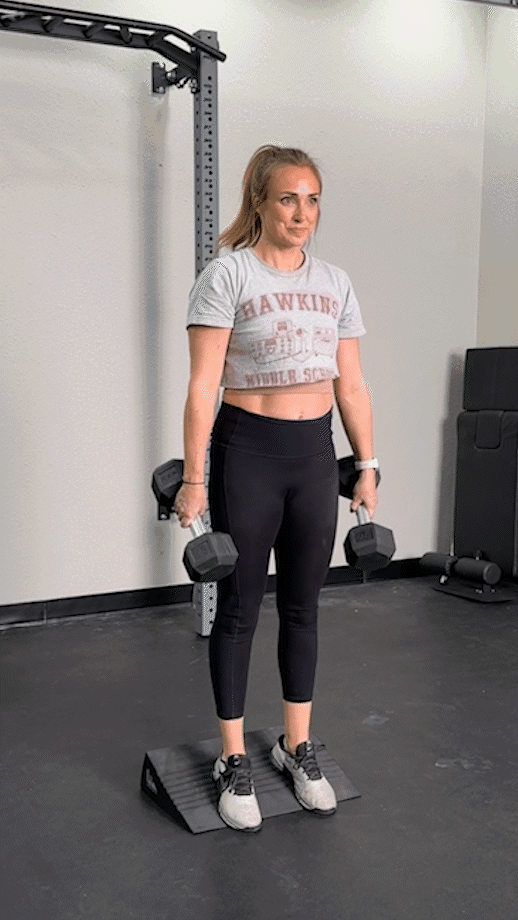
Barbell Deadlift
Why do it: Conventional barbell deadlifts are a powerlifting staple because they work the full body, the posterior chain—hamstrings, glutes, and lower back—especially. You’ll also improve your grip strength by regularly doing them.
How to do it:
- Load the bar, then get underneath it with your feet hip-width apart. You’ll want to stand close enough to the bar that it covers your shoelaces.
- Hinge at your hips to take hold of the bar using a mixed or overhand grip, with your hands outside your legs.
- With a neutral-head position and tight core, push through your feet to stand back up. Squeeze your glutes and hamstrings as you do so.
- Slowly lower the bar back to the starting position, keeping it close to your quadriceps.
- Continue for the desired number of reps.
RELATED: Deadlift: Muscles Worked
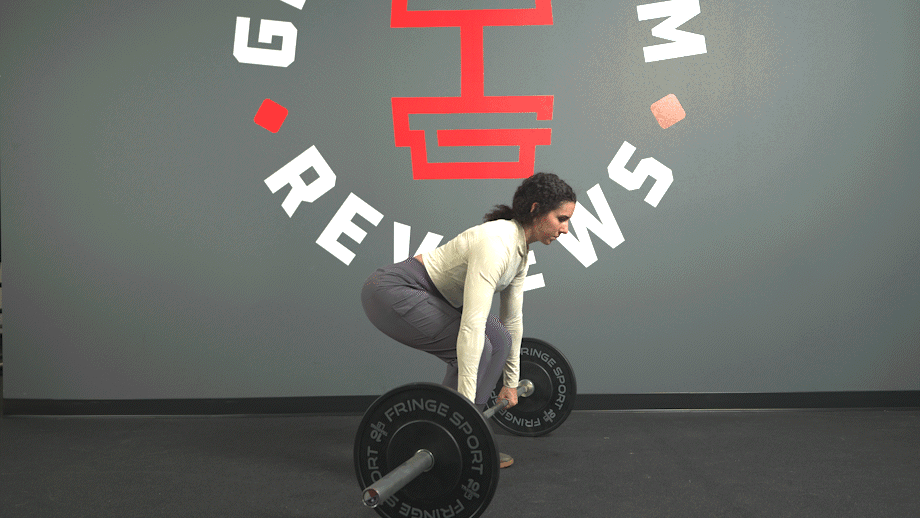
Clean Deadlift
Why do it: The clean deadlift is similar to the barbell deadlift above, but the point is to improve your power clean. The main differences are that your hips start lower, your hands are placed in a clean position, and you always use an overhand grip.
How to do it:
- Step underneath a loaded barbell with your feet hip-width apart. You’ll want the bar close to your shins.
- Hinge at your hips to take hold of the bar with an overhand grip. Your hands should be the same width as they would with a clean (typically just outside shoulder-width).
- Position your hips so they’re slightly lower than a conventional deadlift. This will mean your chest is more upright.
- Brace your core, then drive through your feet to stand.
- Hold at the top, then lower the bar to the ground in a controlled manner.
- Keep going for repetitions.
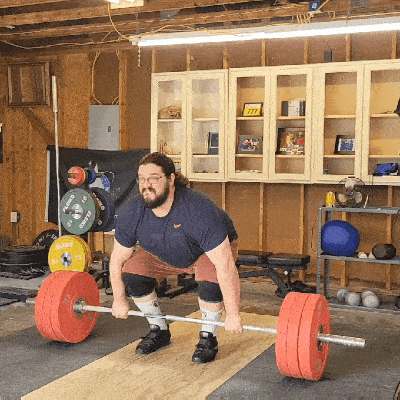
Sumo Deadlift
Why do it: Compared to a traditional barbell deadlift (which you saw above), the sumo deadlift may be friendlier on the lower back, and may enable you to lift heavier weights.
Individuals with longer torsos may prefer the sumo deadlift over the traditional deadlift, according to a 2019 study in the Journal of Sports Science and Medicine2. This is because it’s slightly mechanically advantageous.
How to do it:
- Add weight plates to an Olympic bar, and step underneath it with wide feet (approximately two times your shoulder width).
- With the bar close to your shins, bend at the hips to take hold of it with either a mixed grip or an overhand grip. You’ll want your hands to be inside of your legs.
- Engage your core, stick your chest up, then drive through your heels to lift the bar.
- As you stand, squeeze your glutes to finish the movement.
- Hold, then slowly place the bar back on the ground.
- Deadlift for repetitions.
RELATED: Best Olympic Barbells
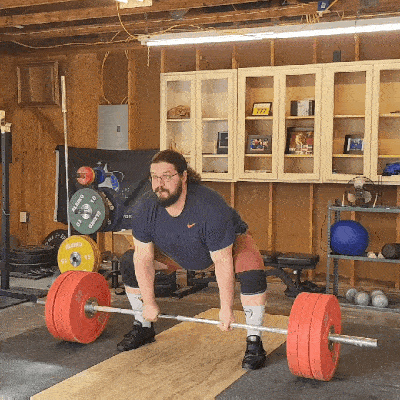
Useful Trap-Bar Deadlift Equipment Accessories
OK, now that you’re ready to get started with the trap-bar deadlift, here are three pieces of equipment I suggest to make your job easier:
Trap Bar
Yep! How are you planning on doing the exercise without one? When looking for the best trap bar for your needs, there are many factors to consider, including overall construction, knurling, finish, weight, handle height (high handles or low handles), price, and more. Luckily, we’ve tested quite a few, so we may be able to point you in the right direction.
Deadlift Shoes
If I’m able to, I like doing the trap-bar deadlift barefoot. Sometimes, I get a look of disgust from the gym owner or manager when I do this (I don’t have a home gym, unfortunately!). The best shoes for deadlifting are the next best option. You’re going to want a pair that’s flat, has a thin sole, provides good traction, and has good ankle support.
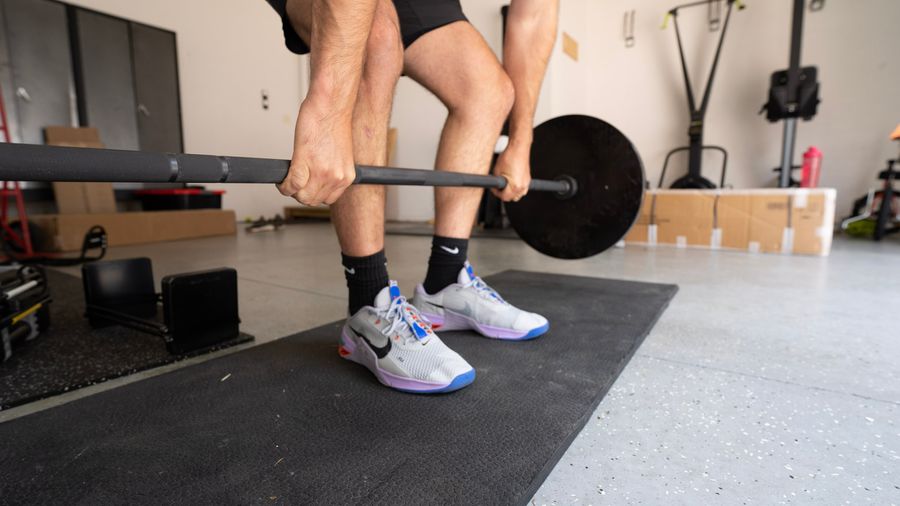
Lifting Straps
There are lifting straps, and then there are lifting straps made for deadlifts (such as RIMSports Weight Lifting Hooks). The benefit of these over regular straps is they have hooks to allow you to lift heavy weights without compromising your form. Personally, I wouldn’t use straps all the time, but to get an extra couple of reps on my last or heaviest lift—why not?
Trap-Bar Deadlift: FAQs
Does trap bar deadlift hit glutes?
Yes, the trap-bar deadlift hits the glutes. In fact, all deadlift variations work the glutes. If you’re wondering whether the trap-bar deadlift is more effective at hitting the glutes compared to other deadlift exercises, I’d say it’s down to individual preferences and body types. Try out a few variations and see what works best.
RELATED: Kettlebell Workouts for Glutes
Is trap bar deadlift better for back or legs?
The trap-bar deadlift works both the legs and the back. It activates the legs more (and therefore the back less) than barbell deadlifts and works the back more (and legs less) than a squat. Think of it as a great exercise to work both the legs and the back, rather than which one it’s better for, because there’s no real right answer to this!
Is trap bar deadlift hard on the knees?
It can be if you don’t do it properly! One of the most common mistakes I see with the trap-bar deadlift is that lifters let their knees cave in. This is because they don’t drive their knees out and in line with their toes during the movement. By maintaining proper form, you’re less likely to find the exercise hard on your knees. If you still experience knee discomfort, try an alternative.
Can I replace squats with trap deadlifts?
A 2020 study by the Journal of Human Kinetics3 compared squats and deadlifts for lower body strength and power training, finding that both can result in similar improvements in lower body maximal strength and jump performance. Therefore, you could replace squats with trap-bar deadlifts, depending on your goals.
I wouldn’t recommend replacing squats with trap deadlifts, however. I include both in my workout routine because I believe trap-bar deadlifts are effective at targeting the posterior chain, and squats are better for activating the quads and core (the anterior chain).
References
- Camara KD, Coburn JW, Dunnick DD, Brown LE, Galpin AJ, Costa PB. An Examination of Muscle Activation and Power Characteristics While Performing the Deadlift Exercise With Straight and Hexagonal Barbells. J Strength Cond Res. 2016 May;30(5):1183-8. doi: 10.1519/JSC.0000000000001352. PMID: 26840440.
- Cholewa JM, Atalag O, Zinchenko A, Johnson K, Henselmans M. Anthropometrical Determinants of Deadlift Variant Performance. J Sports Sci Med. 2019 Aug 1;18(3):448-453. PMID: 31427866; PMCID: PMC6683626.
- Nigro F, Bartolomei S. A Comparison Between the Squat and the Deadlift for Lower Body Strength and Power Training. J Hum Kinet. 2020 Jul 21;73:145-152. doi: 10.2478/hukin-2019-0139. PMID: 32774546; PMCID: PMC7386153.


